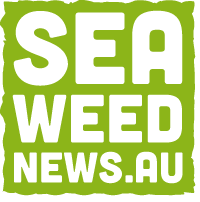Bioactive future for Australia's
seaweed sector
Australia's promising seaweed industry is gathering pace, and bioactives are already at the forefront of the thinking that is shaping the industry's development.
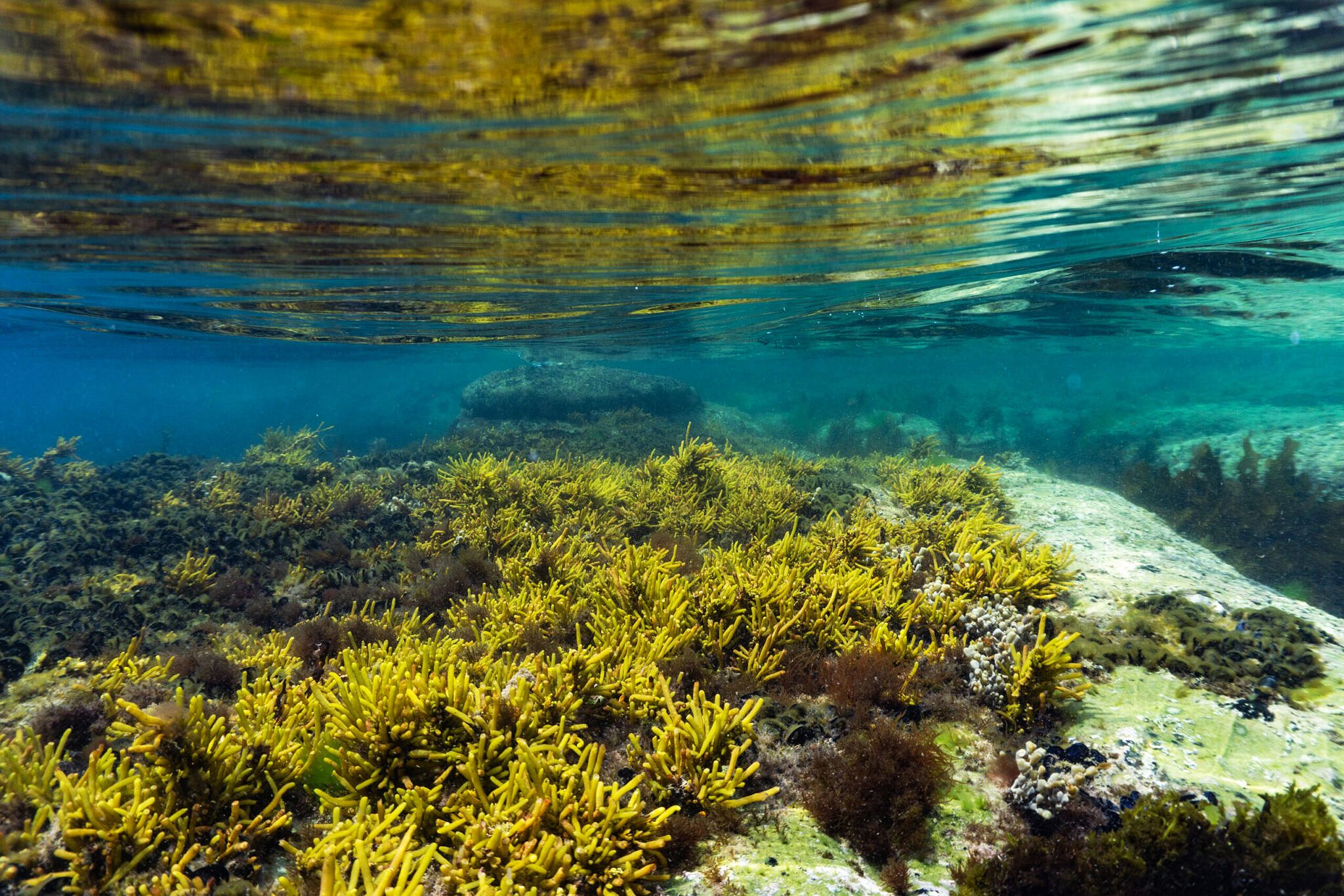
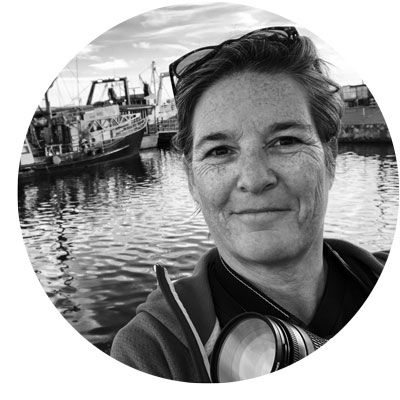
Australia's promising seaweed industry is gathering pace, and bioactives are already at the forefront of the thinking that is shaping the industry's development.
As well as the many uses being developed for seaweed around the world – from foods and fabrics to plastics and carbon stores – Australia's emerging industry is firmly focused on taking advantage of its many bioactive properties.
What is a bioactive? A bioactive – or biologically active chemical – elicits a response in a living organism, tissue or cells. For example: reducing inflammation or improving immune responses.
Developing and commercialising bioactives will be a key topic for discussion during the International Seaweed Symposium, being held in Hobart, Australia and online from 19–24 February 2023 (ISS2023).
With a diversity of species second only to Japan, Australia is considered well positioned to tap into the potential for novel, high-value bioactive properties from species endemic to our southern waters.
Australia has almost 1500 known seaweed species. Of the 1000 or more temperate species found off the continent's southern coastline, 60% are endemic to this region.
Five avenues of development the Australian industry is focused on are:
- Options for organic fucoidans
- Healing products from ulvans
- Feed supplements to reduce methane from cattle
- Fertilisers to improve crop resilience
- Cooperative research to optimise impacts
Leaders in the emerging Australian sector are aware that the smorgasbord of native potential will require careful management of limited research and investment resources.
Leading seaweed biochemist Dr Helen Fitton says there is much still to learn and develop from already well-known bioactives. These include the polysaccharides fucoidan from brown seaweeds, carrageenan from red seaweeds and ulvan from green seaweeds.
These bioactives offer the 'low-hanging fruit' for new products and markets and could help focus research into the selection of native Australian species for propagation.
Options for organic fucoidan
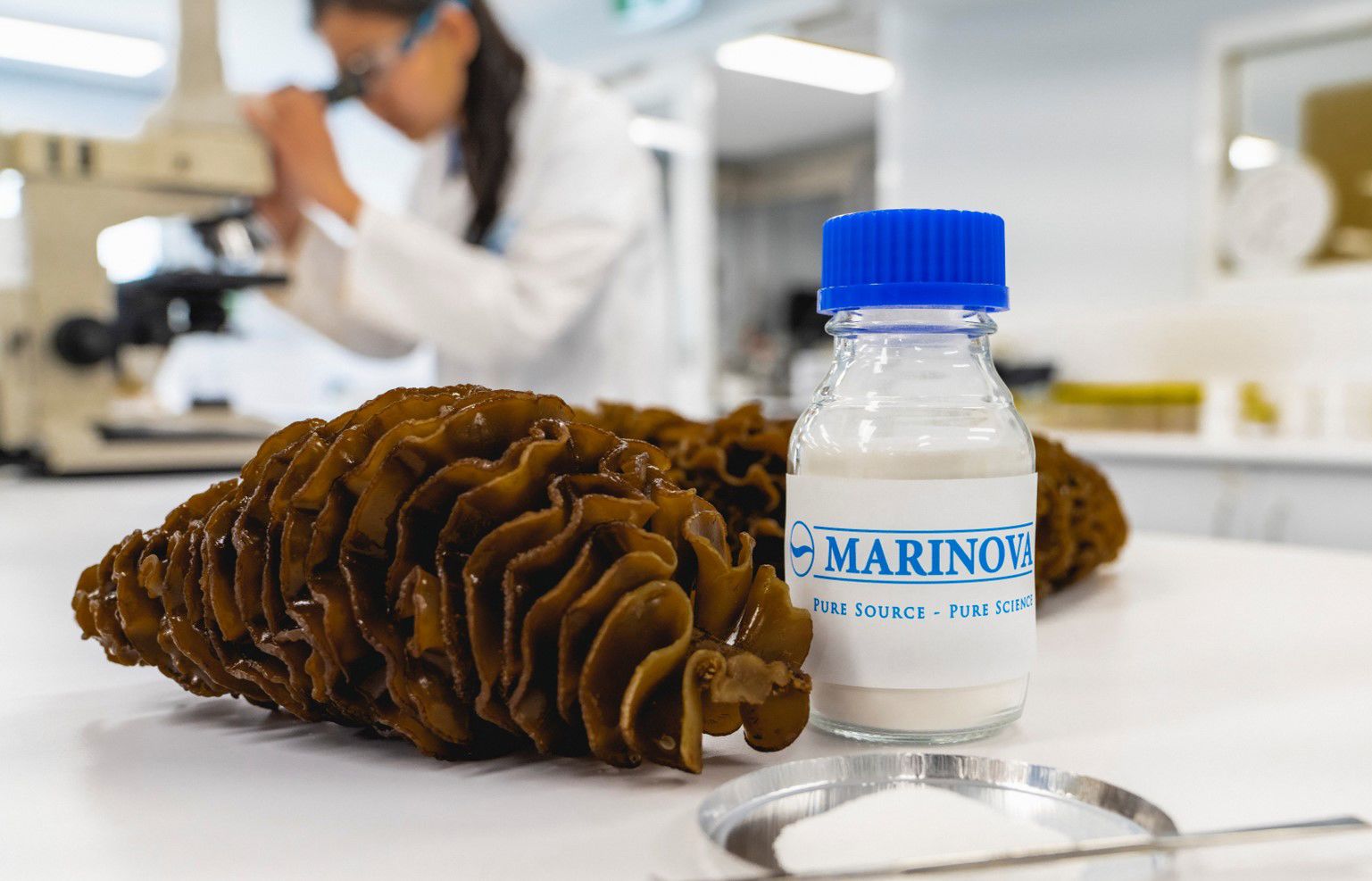
Global markets already exist for fucoidans and Australia has well-developed expertise in organic extraction processes.
Almost 3000 research papers provide evidence of a wide range of anti-inflammatory and antivirual properties of fucoidan that can assist with everything from gut and heart health to skincare and healthy aging. Dr Fitton, who runs her own consultancy, RDadvisor, has authored several of those papers.
Twenty years ago, she determined that fucoidan could be isolated from wakame (Undaria pinnatifida). Dr Fitton went on to help develop a scaled-up process, purification IP and targeted research that provided the foundation for one of Australia's longest-operating seaweed-based businesses, Marinova, where she was chief scientific officer until 2021.
Marinova produces high-quality fucoidans that can fetch up to $12 a gram for use in pharmaceuticals, nutraceuticals, cosmetics and veterinary products.
Describing the company's extracts, CEO Paul Garrott explains they are the world's only high-purity, certified organic fucoidan with global acceptance.
Marinova primarily uses two species, wakame and bladderwrack (Fucus vesiculosus). However, neither of these species is native to or cultivated in Australia.
Production was originally based on the licensed wild harvesting of an invasive outbreak of wakame off Tasmania's south-east coast. This outbreak has dwindled over the years, and now the company also harvests invasive wakame outbreaks off the coast of Patagonia.
Emerging seaweed aquaculture developments in Australia offer a potential new source of supply for the company. Past research has focused on investigating the properties and uses of the fucoidan the company extracts.
New research will help identify native seaweeds that have adequate levels of fucoidan for extraction and will evaluate the properties of that fucoidan, which differs from species to species.
Healing products from ulvans
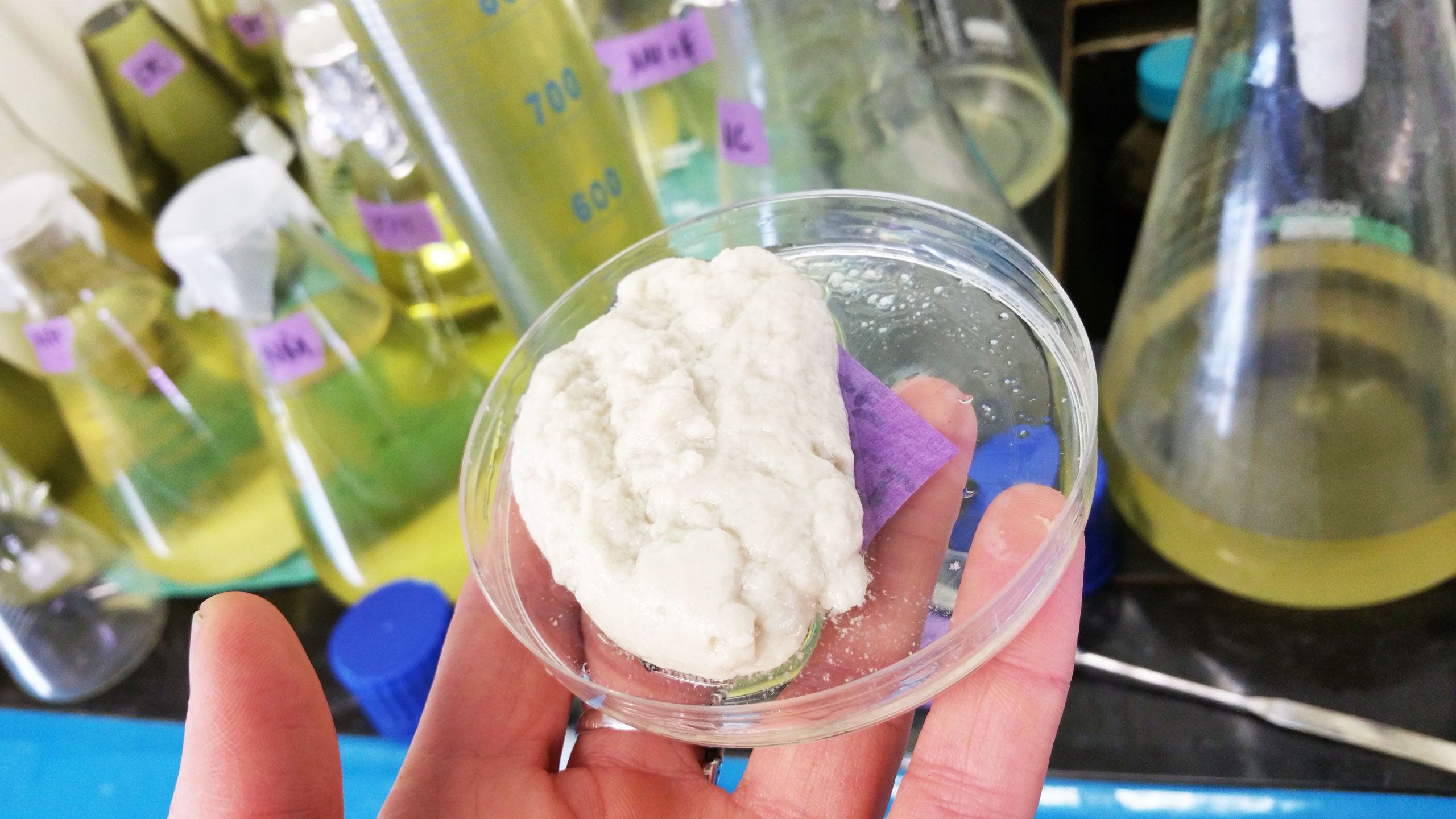
As with brown seaweeds, a growing body of evidence is identifying the bioactive properties of polysaccharides in green and red seaweeds. And these are being used in an increasingly diverse range of products.
In one recent project, Dr Fitton supported research by Dr Lauren Roach and Professor Barbara Meyer at the University of Wollongong that focused on sea lettuce (Ulva spp.) bioactives. They found that a polysaccharide from a specific sea lettuce species farmed in Australia can assist with inflammation experienced by overweight and obese people.
This research was commissioned by Dr Pia Winberg, founder and chief scientist of Venus Shell Systems, which farms the sea lettuce. This vertically integrated business uses the sea lettuce to produce a range of foods and healthcare products under the PhycoHealth brand, including supplements for gut health.
The farm has been operating for five years, but Dr Winberg has been investigating the potential of different Australian seaweeds for the past decade to find the best species for propagation, and the best product uses.
"We do a lot of chemistry and extraction testing of different species and different cultivation methods. There's so much opportunity in Australia because we don't have the same species as the Northern Hemisphere," she says.
Her work has included investigating the nutrition, health and molecular activity of compounds in different species in clinical studies with nutritionists and medical researchers.
Dr Winberg is particularly excited about the potential of bioactives in the sea lettuce species she farms to assist with wound healing.
"We're getting really exciting results showing improved rates of wound healing, the promotion of collagen and elastin in tissue and protection of these vital proteins in skin."
Further research is now underway to incorporate this chemistry into surgical dressings.
Feed supplements
to reduce methane from cattle
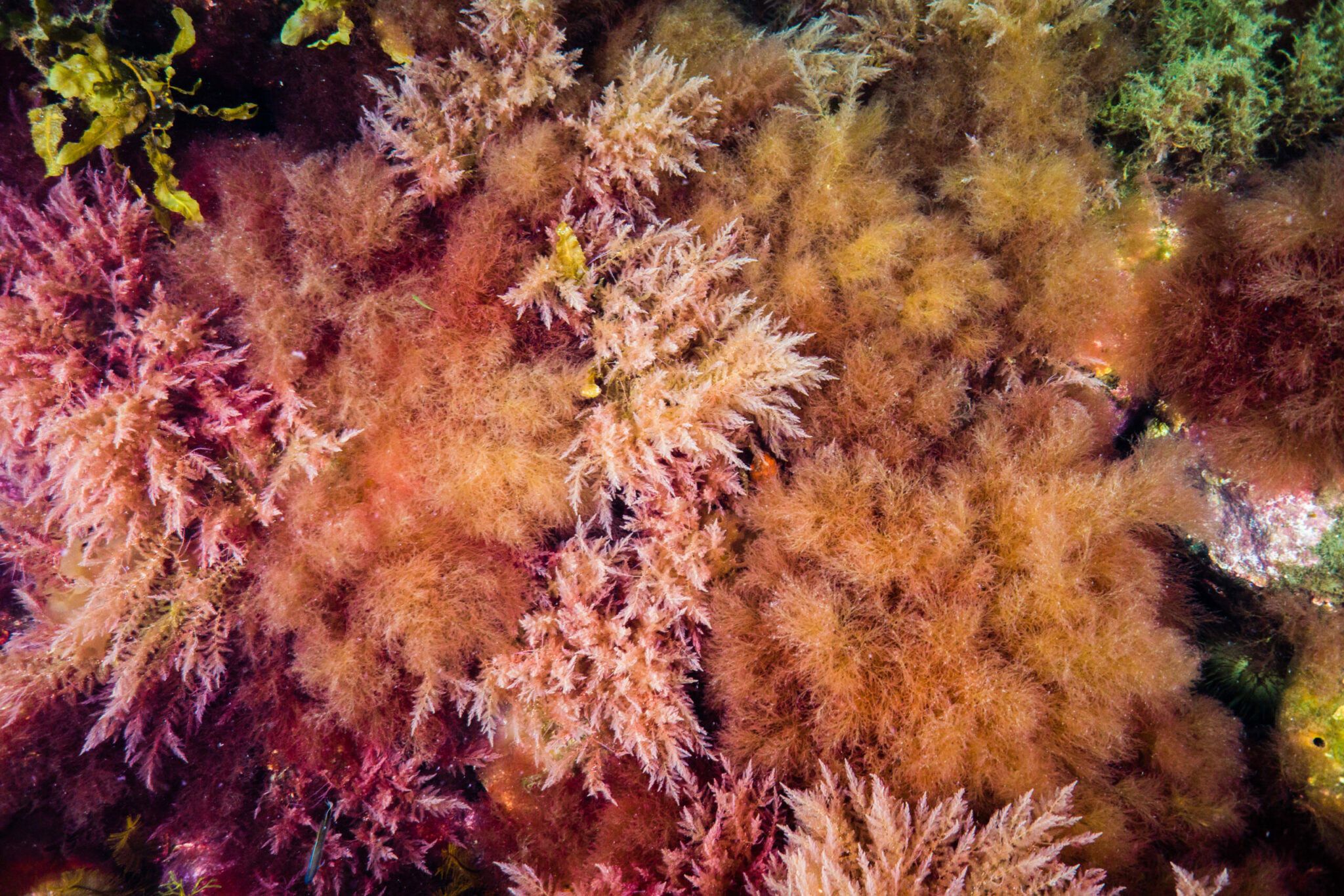
In another sphere of endeavour, the bioactive bromoform is behind a rush of investment and commercial effort that has effectively launched commercial seaweed farming in Australia and has triggered significant international investment.
Bromoform is the active component of the red seaweed Asparagopsis, which can reduce the methane emissions released by burping cattle. Given that cattle are responsible for 14.5 per cent of greenhouse gas emissions globally, reducing these emissions addresses the urgent need for action on climate change.
Asparagopsis has been shown to reduce methane emissions from cattle by 90%, as a supplement of 2% of the total diet.
The species is native to Australia, although not exclusively so.
While working at Australia's national science agency, CSIRO, livestock systems scientist Dr Rob Kinley and his team first identified the bioactive properties of bromoform. This was further developed at James Cook University in Queensland, with research led by Professor Rocky de Nys.
The IP is now held by FutureFeed – a company formed jointly by CSIRO, James Cook University and Meat & Livestock Australia (which licences the FutureFeed process to growers in Australia and internationally). Dr Kinley is now chief scientist at Future Feed.
Three years after the research was first published, the first major investments were made to establish Asparagopsis farming, with CH4 Global and Sea Forest leading the way in Australia and internationally in 2018.
These companies have attracted major funding from the Australian Government and from investors around the world. From a standing start, both companies have developed propagation and hatchery processes, production techniques and processing technologies.
In 2022 both have crops in the water and are selling Asparagopsis supplements to livestock producers.
This demonstrates the speed at which major initiatives can be undertaken, given the political and financial will, even as the science is continuing to evolve.
Dr Sasi Nayar is based in South Australia, where Asparagopsis is cultivated in land-based and at-sea cultivation systems. This work is part of his role as aquaculture program leader for the South Australian Research and Development Institute (SARDI), where he has also led the algal research program for more than a decade. SARDI is the research arm of the Department of Primary Industries and Regions, South Australia.
SARDI is leading local research for CH4 Australia into the propagation and farming of Asparagopsis. Dr Nayar says the bromoform–methane–cattle combination is far from the end of the Asparagopsis story.
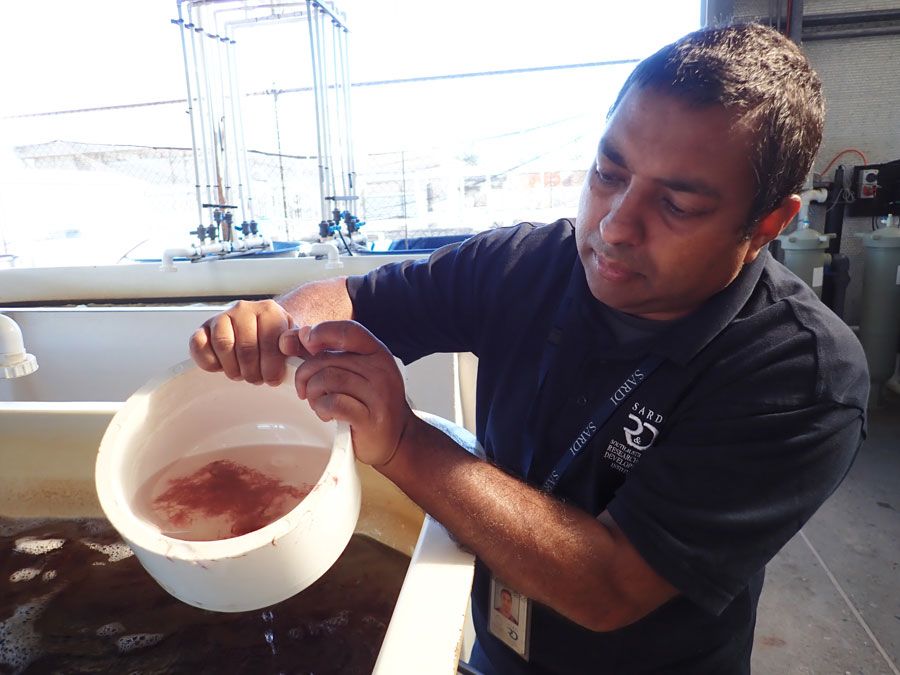
Dr Sasi Nayar leads Asparagopis research for CH4 Australia in South Australia. Photo: Catherine Norwood
Dr Sasi Nayar leads Asparagopis research for CH4 Australia in South Australia. Photo: Catherine Norwood
"There are other novel biochemicals in Asparagopsis that are well known to have antibacterial and antiviral properties that are being investigated," he says.
SARDI has a larger suite of seaweed research underway, funded by the state's Economic and Business Growth Funds, to develop a seaweed industry in South Australia.
In partnership with an industry cluster, SARDI is developing food and functional food products as well as pigments and proteins targeting the alternative protein market to help plant-based foods seem more 'meat-like'. Dr Nayar says pigments are promising as a natural colour source but also as antioxidants to benefit human health.
Fertilisers to improve crop resilience
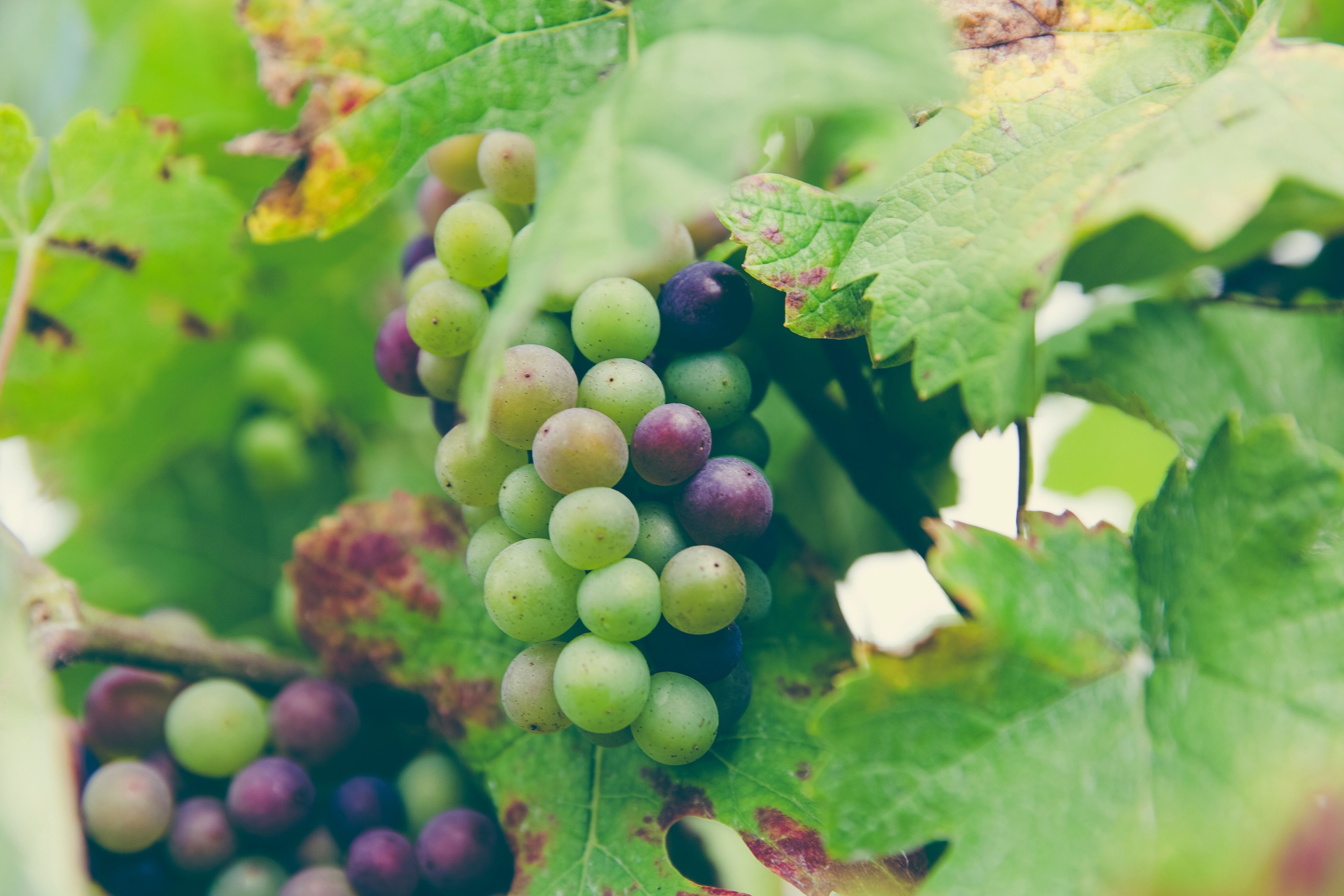
One SARDI project in collaboration with Australian Marine Bioproducts Pty Ltd is focused on developing a new liquid foliar fertiliser spray initially for the viticulture sector.
"Seaweed extracts elicit a biological response in plants that improve their resistance to heat stress, disease and pests."
"There is a substantial body of research around the world showing that seaweed fertilisers benefit plants. There are also some businesses that have been in this field for many years, such as the Australian company Seasol.
SARDI's fertiliser will combine seaweed and hydrolysed fish waste to create a product with a more complete nutritional profile for crops.
Dr Nayar says the seaweed being used is grown in conjunction with mariculture farms in Port Lincoln, with a view to assessing the seaweed's potential in trading nutrient credits as well. But that's another story.
Cooperative research to optimise impacts
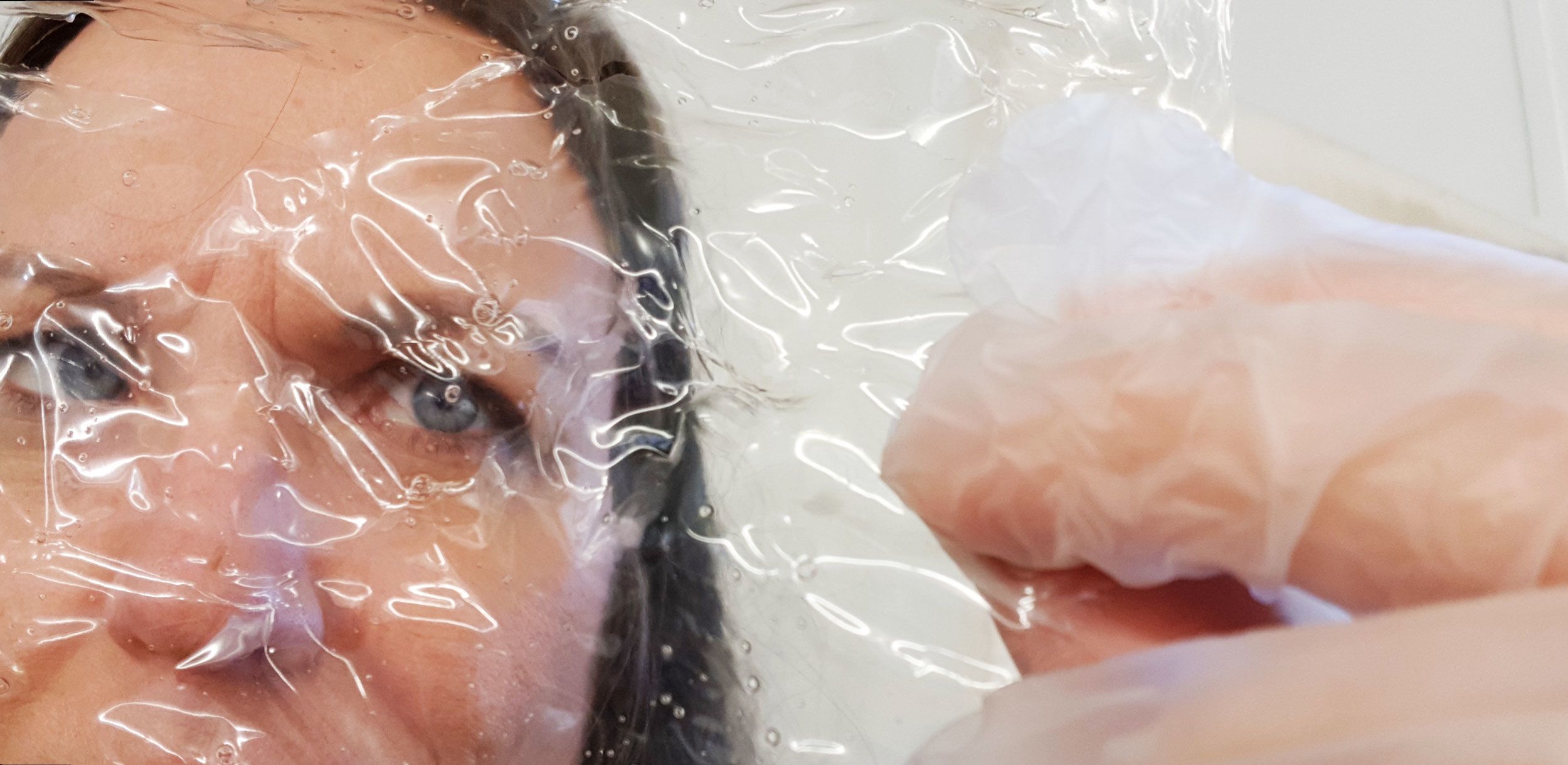
This fertiliser research at SARDI, Dr Winberg's wound healing extracts and Marinova's extraction of fucoidan are all part of work being undertaken in conjunction with Australia's newly established Marine Bioproducts Cooperative Research Centre (MBCRC).
The MBCRC is a 10-year, industry-led collaborative research initiative launched in 2021 with $270 million in funding, including $59 million from the Australian Government.
It currently has about 70 partners that represent a broad cross-section of the industry. These include Australian Marine Bioproducts Pty Ltd, Marinova and Venus Shell Systems, along with some of Australia's major agribusinesses, small and medium enterprises and global chemical industry giants. It also involves partnerships with some of the country's leading scientists and researchers.
Seaweed bioactives represent only one part of the MBCRC research program, which will span the entire supply chain, from the production of raw materials to processing and product development. It includes micro and macroalgae and other marine species such as oysters and finfish.
Professor Catriona Macleod from the University of Tasmania leads the research program focused on growing marine bioproducts for the MBCRC. She says it will play an important role in developing the underlying research capability and operational workforce needed to progress the seaweed industry in Australia.
"At the moment, we have a fairly restricted science space. We have a lot of outstanding scientists, but not enough to do everything that needs to be done."
Professor Macleod recognises that aspirations for seaweed as a 'silver bullet' for a multitude of human health and planetary ills still need to be validated in some instances.
"Seaweed is an amazing plant, and there is no doubt that it has incredible potential. But the science needs to be able to validate the many claims and counterclaims currently being promoted in order to give people and investors the confidence to support the industry development going forward.
"Where the hype is ill-informed, it can lead to misplaced or misdirected research. That’s a poor use of resources. Right now, we don’t have enough resources to have them side-tracked.
"On the upside, it has generated a lot of interest, funding and support, and that means we can get to work and focus on the research that needs to be done," Professor Macleod says.
The path to market
Dr Helen Fitton highlights the importance of bioactives in providing a pathway to high-value specialty products for Australia, rather than low-value high-volume production – the approach that has dominated the country’s primary industries in the past.
"Human health uses are the gold standard. Although there are many safety and regulatory standards that need to be addressed, these potentially offer the highest-value returns."
Antiviral properties are often the first priority for research. She points to the Austrian company Marinomed Biotech AG, which has developed a carrageenan-based nasal spray that blocks a broad range of cold and flu viruses, including the COVID-19 virus.
Dr Fitton says commercial success lies in marrying all elements of the production and supply chain. It's a topic she'll be addressing in detail as a keynote speaker at ISS2023.
"A pile of seaweed on the pier is worth nothing without a market. A novel bioactive remains interesting, but not inherently useful if the species it comes from is difficult to access in the wild or cannot be propagated, or if the bioactive cannot be extracted in a safe, cost-effective way. And new products require research and development as well as market acceptance," she says.
Visit ISS2023 for more information about the symposium program, keynote speakers and registration.
More seaweed news seaweednews.au
Produced in Shorthand by Fiona James for Coretext. Coretext is an official media partner for the ISS2023. View other Shorthand stories by Coretext here

